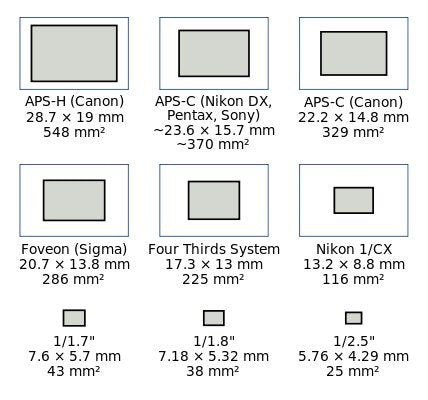

Free shipping on all orders over $50
7-15 days international
22 people viewing this product right now!
30-day free returns
Secure checkout
89808727






Schedule a call with our experienced professionals today. When it comes to underwater photography there are lots of options to consider. Our team will discuss your specific needs and guide you to the perfect gear to get the creative shots you're looking for.
Whether you're looking to get into underwater photography or you're a seasoned pro who just wants to see what's new in today's digital age. there seem to be almost constant new releases and advancements in camera technology. Either way. we've got you covered.
Today. we are going to pretend you're completely new to this and cover the basic differences between Compact Cameras. Crop Sensor Cameras (APS-C & Micro 4/3s). and Full Frame Cameras. We will also touch on the difference between DSLR and Mirrorless. This will help you gain a better understanding of what's out there.
Camera technology seems to be advancing at a breakneck pace. and megapixels seem to be constantly adding up to numbers we never thought possible. With new camera releases happening all the time. it can certainly be difficult to keep up. and if you're new to underwater photography. it may be completely overwhelming. Each camera we have listed below is currently supported by an underwater housing manufacturer.
The question that seems to be asked most frequently is...

This is a loaded question. and before we delve into it. it's important to understand what you will primarily use the camera for and define your goals. There's no reason to invest in the best of the best if you only plan on taking ID images that may never leave the SD card. It's akin to using a submarine to explore a kiddie pool. Some crucial factors to consider include:
Ultimately. the best practice is to consult an expert before you set your heart on a camera. We regularly dive and shoot with this equipment and are more than happy to guide you toward a choice that fits your needs and allows for growth. Fill out our System Builder here and one of our experts will reach out to you.
There has never been a better time to venture into underwater photography. as there are excellent options available across the board and at every price point. Let's dive in and explore the differences between these camera platforms.
The main and most prominent difference among these options is sensor size. The camera sensor is the piece of technology located behind the lens that captures the image. Each of these options corresponds to a different sensor size. which in turn affects the camera's resolution and depth of field (how much of an image is in focus). A helpful way to understand it is that the smaller the sensor. the lower the resolution and the greater the depth of field. These days. even Compact Cameras like the Olympus TG7 shoot at 12 megapixels. which. with proper lighting. can be sufficient depending on how you intend to use your images.

Sensor Sizes from Smallest to Largest:
Another important distinction to note is the difference between Mirrorless and DSLR cameras. While there are numerous differences. the main one is that DSLR cameras have a mirror mechanism inside the camera body. When you take a photo. the mirror flips up to allow light to hit the image sensor. This mirror mechanism is what gives DSLRs their distinctive 'clacking' sound. In contrast. Mirrorless cameras. as the name suggests. do not have a mirror mechanism. Instead. they use the image sensor to display a live preview of the scene on the rear LCD screen or an electronic viewfinder (EVF). This. in turn. leads Mirrorless cameras to offer benefits such as:
As of now. Mirrorless cameras have virtually replaced DSLRs. When Mirrorless cameras first entered the market. there were limited lens options. but as they gained popularity. lens manufacturers picked up the pace. and camera manufacturers have nearly completely discontinued all DSLRs.
Compact cameras are often considered the next step above a GoPro. They offer more control over your settings. including ISO. aperture. and shutter speed. and some even provide full manual modes. These cameras typically feature a built-in optical zoom that allows for various focal lengths but does not support interchangeable lenses. Additionally. compact cameras have the smallest imaging sensors. resulting in lower resolution and greater depth of field.
Here's a list of current popular compact cameras:
Compact cameras are a fantastic entry point into underwater photography. They are affordable. small in size (making them easy to travel with). produce smaller file sizes and are extremely user-friendly. Despite the popularity and affordability of mirrorless interchangeable lens cameras. compact cameras like the Olympus TG6 & TG7 remain among the most popular entry-level underwater cameras. The main limitation of these cameras is their lack of full manual control. which can eventually restrict your creative options.
A Crop Sensor refers to a camera sensor that is smaller than a Full Frame or 35mm.

The above image shows the image are of a APS-C vs a Full Frame sensor.
Today. there is a greater variety of crop sensor camera options than ever before. When selecting one. it's essential to consider which models have underwater housing support. These cameras are gradually replacing compact cameras because they often share similar size and cost characteristics. Moreover. they offer numerous advantages compared to compact cameras. such as the ability to access full manual control and use interchangeable lenses.
Interchangeable lenses can significantly enhance your ability to create various types of images. This opens up possibilities for using specialized lenses. including dedicated macro lenses. fisheye lenses. rectilinear wide-angle lenses. and many others. Cameras with smaller imaging sensors generally have a larger depth of field. resulting in more of the image being in focus. Conversely. larger image sensors make lens focus precision even more crucial. Below is a list of currently popular APS-C/Micro 4/3s cameras in underwater photography.
Current Popular Crop Cameras
Micro 4/3s
Full Frame cameras represent the professional-level choice in the world of photography. They feature the largest imaging sensors. typically measuring 35mm. which results in the highest resolution and best image quality. Full Frame cameras also offer an extensive range of lens options.

Opting for a Full Frame camera provides ample room for growth. as these cameras are often highly customizable and feature-rich. In particular. mirrorless Full Frame cameras boast some of the most advanced autofocus systems available. making them stand out in the current camera market.
Current Popular FF Cameras
Let's rephrase this question. which camera is best for YOU for underwater photography? Every camera is a unique tool. offering distinct capabilities. The best camera for your underwater photography journey depends on your specific goals as a photographer. If you're eager to explore these camera options in greater detail. don't hesitate to reach out to us. We're more than happy to dive into the specifics and assist you in making the right choice.
Already know which camera you want?
